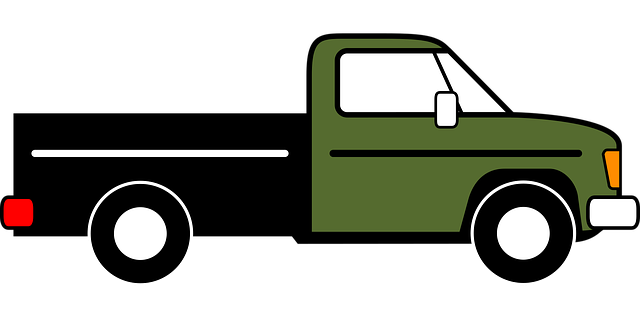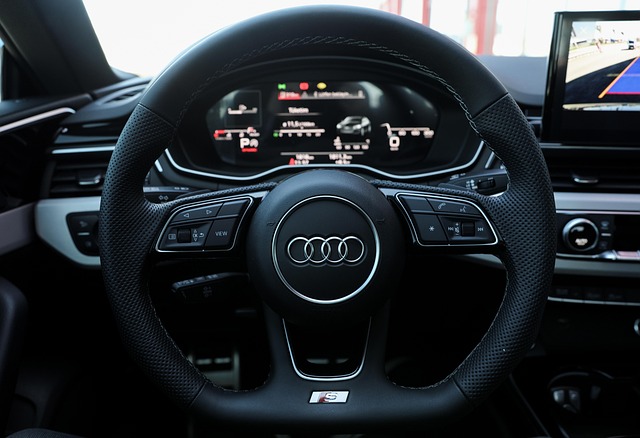Registering a Car in CA: Step-by-Step Guide with VIN Verification
Registering a car in California involves understanding a straightforward yet important process. This step-by-step guide walks you through everything, from gathering essential documents like proof of i…….

Registering a car in California involves understanding a straightforward yet important process. This step-by-step guide walks you through everything, from gathering essential documents like proof of insurance and ownership to completing a crucial VIN verification. Learn how to submit applications, pay fees, and receive your official vehicle registration documents promptly. By following these simple steps, ensure a smooth car registration experience in the Golden State.
- Understanding the California Vehicle Registration Process
- Gather Necessary Documents for Car Registration
- Perform VIN Verification: Steps and Importance
- Submit Applications and Pay Fees for Registration
- Receive Your Vehicle Registration Documents
Understanding the California Vehicle Registration Process

Understanding the California Vehicle Registration Process
In California, registering a car involves several key steps, beginning with thorough vehicle inspection. This includes a crucial VIN verification (Vehicle Identification Number) process to ensure the vehicle’s authenticity and history. The VIN inspection checks for any outstanding issues, such as theft or flood damage, which could impact registration. Residents can opt for traditional stationary vin inspection at a DMV office or consider more convenient mobile vin verification services that come to their location.
After successful VIN verification, the next step involves gathering necessary documents, including proof of insurance, proof of ownership, and sometimes additional fees based on vehicle type and age. Once all these elements are in place, individuals can visit a California DMV office or use an online registration platform to complete the registration process, securing their vehicle’s legal status within the state.
Gather Necessary Documents for Car Registration

Before you start the registration process for your car in California, ensure you have all the required documents ready. This includes the vehicle’s title, which is typically provided by the previous owner during the transfer of ownership. Additionally, you’ll need proof of insurance and a valid driver’s license to prove your identity. The Vehicle Identification Number (VIN) verification is a crucial step that ensures the car’s authenticity. It’s recommended to avail of a mobile VIN inspection or use a mobile VIN verifier to ensure all details match and avoid any potential issues during registration.
Having these documents readily available streamlines the registration process, which can be completed at a California Department of Motor Vehicles (DMV) office. The DMV will perform a series of checks, including validating your vehicle’s title, verifying your insurance, and conducting a mobile VIN verification to confirm the car’s history and ensure it complies with all regulations before issuing the registration paperwork.
Perform VIN Verification: Steps and Importance

Before registering your car in California, performing a Vehicle Identification Number (VIN) verification is a crucial step. This process involves checking the vehicle’s history and ensuring it meets safety standards. You can conduct a VIN inspection yourself or use a mobile vin verifier to cross-reference data with national databases. Start by locating your car’s unique 17-character VIN, typically found on the vehicle’s certification label, engine block, or driver’s side door jamb.
Then, compare this number with information provided by various reliable sources, such as state records and specialized online platforms. A mobile vin inspection app can simplify this task, offering a quick and convenient way to verify the vehicle’s history, including previous ownership, accident reports, and outstanding recalls. This step is essential for ensuring you’re making an informed decision when registering your car in California.
Submit Applications and Pay Fees for Registration

After gathering your documents, it’s time to submit your applications and pay the registration fees. This involves several key steps that are crucial for a smooth process. Begin by filling out the Application for Title and Registration (Form DV-140) available from the California Department of Motor Vehicles (DMV). Ensure all information is accurate and complete, including your vehicle’s details and personal data.
Along with the application, you’ll need to pay the required fees. These include a registration fee, a vehicle identification number (VIN) verification fee, and any additional taxes or surcharges applicable to your vehicle. Consider using a mobile VIN verifier to streamline this process, as it allows for quick and convenient VIN inspection, ensuring accuracy and saving time.
Receive Your Vehicle Registration Documents

After completing the registration process at the DMV, it’s time to receive your vehicle’s official documents. This includes your California Vehicle Registration certificate and a unique Vehicle Identification Number (VIN) verification report. The VIN is a crucial identifier for your car, consisting of 17 characters that provide detailed information about the vehicle’s make, model, year, and manufacturing details.
Ensure you obtain a comprehensive report through a trusted mobile vin verification or mobile vin inspector service to avoid any discrepancies. This digital inspection offers a fast and accurate way to verify your VIN, providing peace of mind and ensuring that all documents are in order for your newly registered vehicle.
Registering a car in California involves understanding the process, gathering essential documents, completing a VIN verification, and submitting applications with the required fees. By adhering to these steps, you ensure a smooth registration experience. Remember, accurate VIN verification is crucial for maintaining a legitimate registration, ensuring safety, and avoiding legal issues. Once complete, you’ll receive your official vehicle registration documents, allowing you to legally operate your car in the Golden State.







